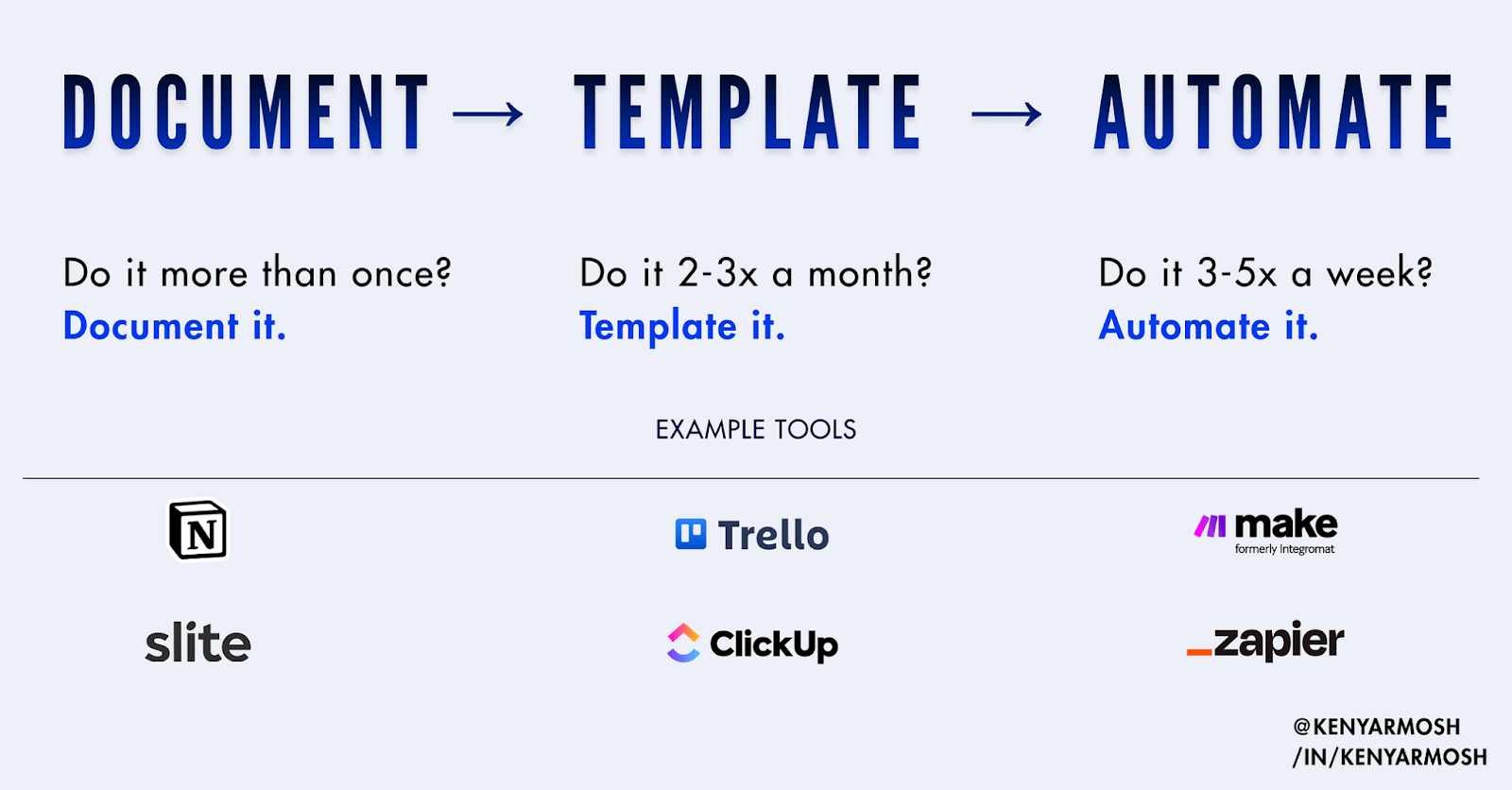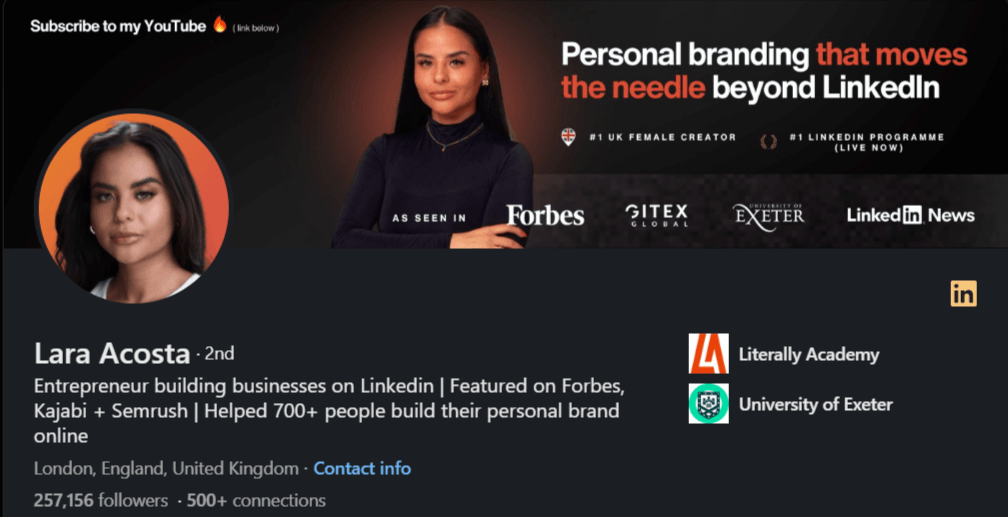🚀 TL;DR
- In 2023, Lara Acosta was a skilled freelancer stuck in a “feast-or-famine” cycle without documented systems.
- Her main challenges: accepting misaligned clients, no scalable offers, inconsistent delivery, and being overly reactive.
- Ken Yarmosh worked with her to define a “Lighthouse Client,” package services, and apply a “Document → Template → Automate” framework.
- After systematizing, Lara built a six-figure business, launched a digital product (“Literally Academy”), got sponsorships, and expanded into speaking & multiple revenue streams.
- The key lesson: systems (not hustle) are the leverage that let a business scale, free the founder, and attract better-fit clients.
The journey from a struggling freelancer to a six-figure entrepreneur is rarely a straight path. It requires intentional systems, clear strategy, and often, the right guidance.
When Lara Acosta first reached out to me in 2023, she was talented but overwhelmed—like many solopreneurs who've mastered their craft but not their business.
Today, she runs a structured, profitable business that doesn't rely on constant client acquisition or working with clients who drain her energy.
This transformation wasn't magic. It was methodical.
Let me walk you through exactly how Lara went from "chaotic mess" (her words, not mine) to systemized success.
What did Lara Acosta's business look like in 2023?
In 2023, Lara was already establishing herself as a voice in organic marketing and personal branding.
She had skills. She had knowledge. She had potential.
What she didn't have were systems.
Lara's business operated on the feast-or-famine cycle familiar to many freelancers. She constantly hunted for new clients, accepted projects that weren't aligned with her strengths, and struggled to maintain consistent income.
Her approach to client acquisition was reactive rather than strategic. When a lead came in, she'd jump on it regardless of fit. When work dried up, she'd scramble for more.
She was working harder, not smarter—a common trap for talented people who haven't structured their business operations.
There was no documented process for onboarding clients, delivering services, or scaling offerings. Everything lived in Lara's head, which meant every decision required her direct involvement.
What were the main challenges in Lara's business?
When I began working with Lara, several key challenges became apparent:
- No client qualification system. Lara was accepting almost any client who came her way, leading to mismatched expectations and energy-draining relationships.
- Inconsistent service delivery. Without standardized processes, each client engagement was custom-built from scratch—exhausting and inefficient.
- No leverage in her business model. Her income was directly tied to her time, creating a hard ceiling on her earning potential.
- Reactive business development. Without a systematic approach to finding and converting ideal clients, her pipeline was unpredictable.
- No scalable offers. Everything was custom, one-off work with no path to create more value without more hours.
These challenges aren't unique to Lara. They're common roadblocks for most service providers looking to scale beyond the limitations of selling their time.
The problem wasn't Lara's expertise or work ethic. The problem was operating without the business systems needed to leverage that expertise.
How I helped Lara build systems and structure
My approach with Lara focused on three critical areas: client selection, offer optimization, and business systemization.
First, we identified her "Lighthouse Client"—the specific type of client who values her unique expertise, pays premium rates, and energizes rather than drains her. This wasn't just about targeting a demographic; it was about defining the exact client attributes that lead to successful, profitable relationships.
With this clarity, we created a qualification system that filtered potential clients based on these criteria. This immediately reduced time wasted on poor-fit prospects and increased her close rate with ideal clients.
Next, we restructured her service offerings. Rather than custom-creating each client engagement, we developed standardized packages with clear deliverables, processes, and outcomes. This allowed Lara to:
- Deliver more consistent results
- Reduce the mental load of project planning
- Scale her capacity by creating repeatable workflows
- Communicate her value more effectively to prospects
Most importantly, we implemented my Document → Template → Automate framework across her business operations:
- We captured her expertise and workflows that were previously only in her head.
- We converted these workflows into reusable templates for everything from client communications to delivery processes.
- We identified repetitive tasks that could be automated, freeing Lara's time for high-value activities.

This systematic approach to her business operations created immediate gains. Tasks that once took hours now took minutes. Decisions that once caused stress now followed clear protocols.
The final transformation
The results speak for themselves. Since implementing these systems, Lara has:
- Built a six-figure business while simultaneously completing a full-time Master's degree
- Successfully launched her first digital product, "Literally Academy," teaching others to build six-figure personal brands on LinkedIn
- Developed multiple revenue streams, including affiliate partnerships with companies like TweetHunter, Taplio, and AuthoredUp
- Secured sponsorships with organizations like Taplio, Riverside, and Notion
- Expanded into keynote speaking and events over time

Most importantly, she accomplished all this while working with clients she genuinely enjoys—people who align with her values and appreciate her expertise.
As Lara put it:
Why systems matter more than hustle
Lara's story demonstrates what I've seen repeatedly with clients: systems beat hustle every time.
The most valuable asset in your business isn't your work ethic or even your expertise—it's the systems you build to leverage those assets.
Without systems, your business remains dependent on your constant input. With the right systems, your business becomes an asset that works for you rather than the other way around.
For Lara, systematizing her business didn't just mean making more money. It meant gaining control over who she works with, how she spends her time, and the impact she creates.
It meant transforming from reactive freelancer to proactive business owner.
The key question isn't whether you can work harder—it's whether your business structure allows your work to create compounding value over time.

